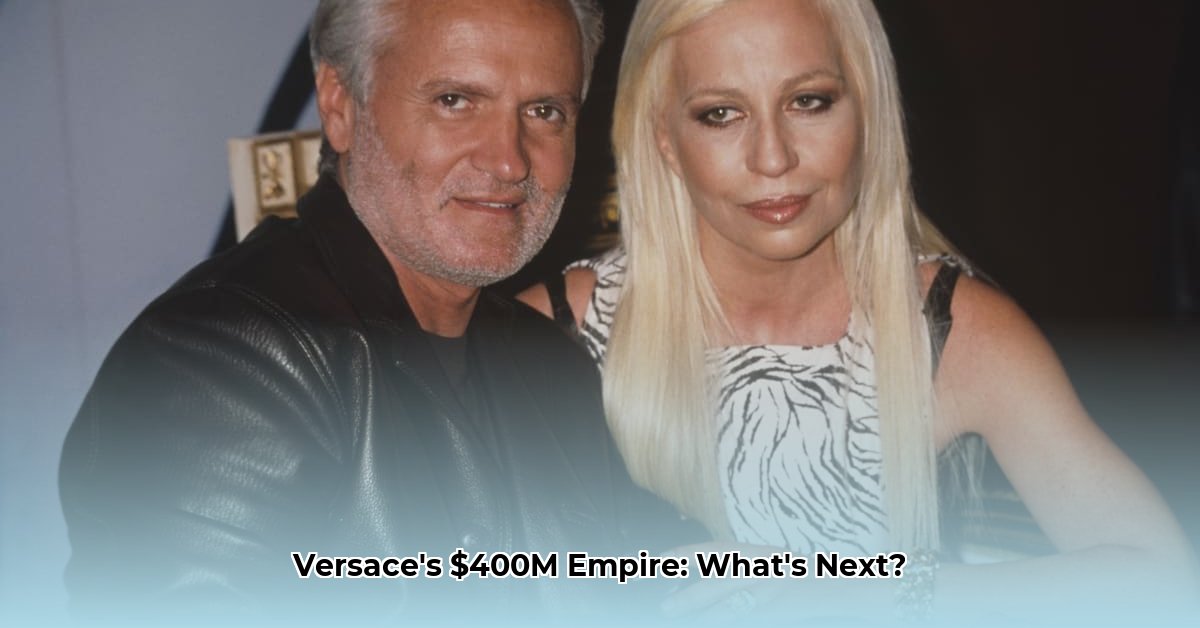
Donatella Versace's estimated $400 million net worth isn't merely a reflection of personal wealth; it's a powerful symbol of the Versace empire's enduring success. However, recent strategic shifts, including Donatella's transition to Chief Brand Ambassador and the appointment of Dario Vitale as Chief Creative Officer, signal a new chapter for the iconic fashion house. This article explores the implications of these changes, analyzing the risks and opportunities facing Versace and its stakeholders.
The Versace Legacy and a Strategic Shift
Donatella Versace's decades-long leadership transformed the Versace brand into a global luxury powerhouse. Her $400 million net worth directly reflects this success, representing the tangible value she and her designs have created. Yet, her recent move to Chief Brand Ambassador, relinquishing the creative helm to Dario Vitale, marks a significant strategic pivot. This transition aims to balance the preservation of Versace’s distinctive heritage with the injection of fresh creative energy. Will this strategy succeed in maintaining the brand's allure while attracting a new generation of customers?
Financial Foundations and Future Ambitions
The sale of Versace to Capri Holdings for $2.12 billion underscores the brand's immense financial strength. This acquisition provided significant resources, enhancing Versace's global reach and operational capabilities. However, persistent rumors of a potential merger with Prada, a company valued at approximately $1.6 billion, add an element of uncertainty. While unconfirmed, such a merger would create a luxury fashion juggernaut, yet it also presents significant regulatory and strategic challenges.
A New Era of Creative Direction
Dario Vitale, Versace's new Chief Creative Officer, brings a fresh perspective following his tenure at Miu Miu. His appointment signals a shift towards modernizing the brand, potentially broadening its appeal to a younger demographic. However, the critical question remains: can Vitale successfully innovate while maintaining respect for the core elements that define the Versace aesthetic—its bold designs, luxurious fabrics, and iconic brand identity? One misplaced step could jeopardize a brand legacy worth hundreds of millions.
Risk Assessment: Balancing Innovation and Heritage
The transition presents both opportunities and risks:
| Stakeholder | Potential Risks | Potential Opportunities |
|---|---|---|
| Versace Leadership | Loss of brand identity, creative stagnation, failure to connect with younger consumers | Fresh creative vision, broadened brand appeal, expanded market reach |
| Investors | Negative market reaction to changes, decreased profitability | Increased brand value, higher returns on investment |
| Consumers | Disappointment with new designs, alienation of loyal customers | Renewed excitement, innovative products, inclusive marketing |
| Competitors | Increased competition, loss of market share | Opportunities to exploit Versace’s perceived vulnerabilities |
Donatella's continued involvement as Chief Brand Ambassador is a critical mitigating factor. Her decades of experience, strong brand recognition, and enduring connection with Versace's heritage ensure a smooth transition and provide invaluable guidance to Vitale.
The Future of Versace: A Billion-Dollar Question
The success of Versace's strategic shift hinges on several factors: Vitale’s ability to innovate within the brand’s established identity, the effectiveness of Donatella's role as brand ambassador, and the broader market reception to these changes. Should a merger with Prada materialize, the implications for the brand's future and its valuation would be profound. Ultimately, the question remains: Can Versace maintain its position at the forefront of the luxury fashion industry, balancing heritage with evolution, while navigating the complexities of a competitive and dynamic market?